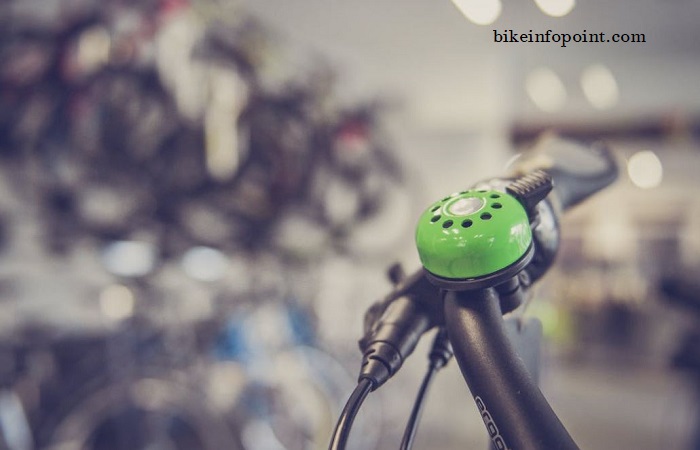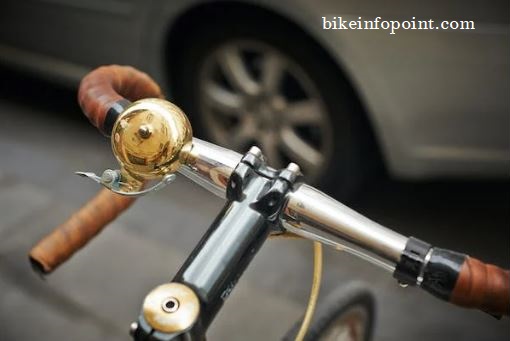
Is a Bell Necessary on Your Bicycle?
As a bicyclist, you may have wondered if it is necessary to have a bell on your bike. While it is not a legal requirement in all areas. A bell can be a useful tool for alerting pedestrians and other cyclists to your presence on the road or trail. We will discuss the arguments for and against its use.
Table of Contents
ToggleArguments for a Bell on a Bicycle

Benefit of using a Bicycle Bell
Easy to use: One of the main benefits of using a bicycle bell is that it is extremely easy to use. All you have to do is give the bell a quick tap with your finger and it will make a loud, distinctive sound that can be heard by other road users. This is much easier and more convenient than shouting or honking a horn, which requires more effort and can be harder to hear.
Easy to carry: Bicycle bells are also very convenient to carry, as they are small and lightweight. Most bells are designed to be mounted on the handlebars of your bike. Which makes them easy to access whenever you need them. Some bells can also be carried in a bag or pocket.
Can be used on any type of bike: Another benefit of bicycle bells is that they can be used on any type of bike, regardless of the size or style. Whether you have a road bike, a mountain bike, or a cruiser, you can easily install a bell on your handlebars and use it to signal your presence and intentions to other road users. This makes them a convenient and versatile accessory for any type of cycling.
Alerting pedestrians and other cyclists of your presence: One of the primary benefits of using a bicycle bell is that it allows you to signal your presence to pedestrians and other cyclists on the road. This is especially important when cycling on busy streets or in areas with a lot of foot traffic. Because it can help prevent collisions and accidents. By ringing your bell as you approach a pedestrian or another cyclist you can give them a heads-up that you are coming and give them time to react. This can help reduce the risk of injury to both you and other road users.

Signaling your intention to pass or turn: Another important safety benefit of using a bicycle bell is that it allows you to signal your intention to pass or turn to other road users. For example, if you are approaching a pedestrian from behind and want to pass them. You can use bell to known them that you are coming and give them time to step out of the way. Similarly, if you are approaching a corner and want to turn, using your bell can let other road users know of your intention. By using a bell to signal your actions, you can help reduce the risk of misunderstandings and accidents on the road.
Courteousness: Using a bell on a bicycle can also be seen as a more courteous way to alert others of your presence. In some cultures, using a bell is considered a sign of respect and good manners. as it allows others to know that you are coming and gives them a chance to move out of the way if necessary. Using a bell can also be a more peaceful and less aggressive way to communicate with others. Because it avoids the need to make a loud or startling noise.
Arguments Against a Bell on a Bicycle
Other options: One argument against the necessity of a bell on a bicycle is that there are alternative ways to alert pedestrians and other riders of your presence. For example, you can use hand signals to indicate your intention to turn or change lanes. You can give a verbal warning, such as saying “passing on your left” or “on your right.” These options may be more effective in certain situations. Such as when a bell is not loud enough to be heard or when the person you are trying to alert is not looking in your direction.

Legal requirement: In some areas, a bell is not legally required on a bicycle. For example, in the United States federal law does not require bicycles to have bells, and many states do not have laws specifically requiring them either. This means that whether or not to use a bell is largely a matter of personal preference.
Lack of effectiveness: Another argument against the necessity of a bell on a bicycle is that it may not always be effective in alerting others of your presence. This can be especially true in noisy areas or if the rider is traveling at a high speed. as the bell may not be loud enough to be heard over other sounds or may not have enough time to register with the person you are trying to alert. In this situation, the best solution is hand signals or verbal warnings may be more effective.
Whether or not a bell is necessary on your bicycle ultimately depends on your personal preference and the specific context in which you will be riding. On one hand, a bell can be a useful tool for alerting pedestrians and other road users of your presence. On the other hand, bells may not be necessary in all circumstances and in some cases, other methods of signaling may be more appropriate (such as vocalization or hand signals). Ultimately, the decision to use a bell on your bicycle should be based on your own judgment and an assessment of the risks and benefits in your particular situation.


